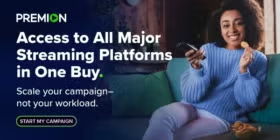By Charlene Weisler
The mind works in mysterious ways, unless you are tracking the path to purchase. According to Daniel Codella, Senior Content Marketing Manager, Wrike, there are 7 psychological triggers that marketers can use to ascertain how consumers think and feel. Triggers are common psychological motivators, cognitive biases and behavior patterns. Knowing them can help influence and understand consumer interest, attention and actions.
This is vital because, as he noted, “Ninety-five percent of purchasing-making decisions take place in the subconscious mind.” Product designers are especially adept at exploiting these triggers. “They are able to design products and apps that we have an emotional bond to,” Codella explained. But you don’t have to be a designer to apply these triggers. “People can be moved to action, enthusiastic persuaded to try new things just based on writing alone,” he added.
Here are the 7 Triggers:
- Faith in Aesthetics. “The way that things look matters a lot,” he stated. More than 50% of our brain is used to process visual information. Only 8% is used for touch and 3% for hearing. People make immediate judgments based on how things appear. Visual appeal can increase perceived credibility, authority, trust and value.
- Request Justification. People have a natural tendency to comply with requests if they are given a reason why. “When people understand why you are doing certain things, they are more likely to follow through and do it,” he explained. When a “because” is included, compliance increased from 60% to 95% in a study about cutting into a line. For marketers, be clear in what you will do and add something visual about your deliverable.
- Social Proof and the Bandwagon Effect. Because we are social creatures, the actions of others affects how we think we should act. In unfamiliar situations, we look to others to validate decisions, even if we don’t like these other people. “There is power in numbers,” Codella noted, because feeling included in a group is a strong motivator. Interestingly, there are cases where aligning with smaller groups offers a sense of exclusivity. Examples are Facebook showing likes with specific friends, social-proofing our posts. This includes building momentum. Getting traction for messages, just as an airplane need momentum to lift off, is important for marketers. Codella suggests adding comments to your articles to get discussions started.
- Serial Positioning. “The order in which we encounter information is powerful,” he asserts. People can most easily recall information from the beginning or end of a list. The beginning is the Primacy effect and the end is the Recency effect. So Codella recommended that marketers should, “Tell me. Show me. Tell me what you showed me.”
- Availability Cascade. The more a piece of information is repeated, the more likely we are to believe it. Repeating claims such as The Best and The Most consistently will eventually get consumers to believe it. Repetition in social media is important because the average lifespan of posts range from 18 minutes on Twitter to 7.4 hours on YouTube. “People don’t pay as much attention to our marketing as we think they do,” he noted.
- Curiosity. “This is one of the most powerful emotions,” according to Codella. There are no limits as to what people will do to satisfy their curiosity. Having partial information drives us to fill in the information gaps. But balance is important. Too little information doesn’t drive enough interest and too much makes seeking more information unnecessary. Tweaking blog titles so as to pique curiosity will drive traffic.
- Labeling. “We are a lot more like each other than we like to admit. We don’t mind being included in a group if we like the attributes of the group.” Codella cited the example of a study where people were randomly labeled “politically active” even though they were no more active than the other groups. However this group was 15% more likely to vote. Codella’s advice is to label customers by the qualities you’d like them to have and they will change their behavior to reflect those characteristics.







